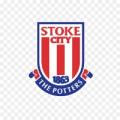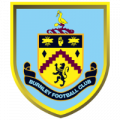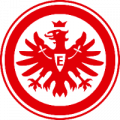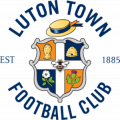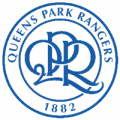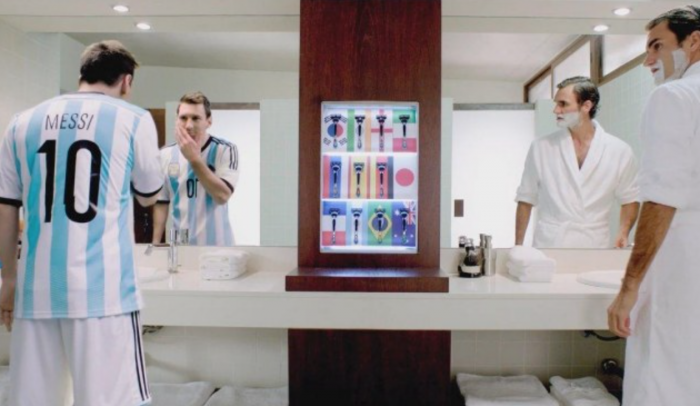Tennis and soccer. Two totally different sports in terms of how they’re played. One is more popularly known for having a team, fielded with 11 players on the pitch. The other has a court and two players on opposite ends of the net, in most cases, battling it out to figure out who is the superior of the two.
Despite their differences, the personalities and type of players are very similar. We delve into the world of tennis and soccer as we compare some of the game’s best and rising stars.
Roger Federer-Lionel Messi
This is simpler than it looks. Both men are considered one of the, if not the world’s best or have been anointed as the greatest player of this generation or the Greatest of All-Time (GOAT). How do these two stack up? Well, both men just make the impossible look so effortless. Countless times we’ve seen Messi dribble through defenses alone before scoring a phenomenal goal, and Federer does the same, turning the tide on a point in which he has no business winning.
With both men, there’s just an aura every time they take center stage, no matter win or lose, because of their brand and all that they’ve accomplished. They both take through the monickers of the “quiet, humble superstar who lets their game do the talking” and there’s no doubt that both of them do that.
In terms of accolades, Federer has 17 Grand Slam titles while Messi has 5 Ballon d’Ors as well as 4 UEFA Champions League titles to his name, both proving that they’re on top of the world. Each man owns records which some may not touch such as 39 major semifinals for the Swiss maestro or 91 goals for club and country in a calendar year for the Argentine wizard.
Despite all the records and silverware, their performance for their country leaves a little more to be desired. 2014 was the closest Messi has come to winning the World Cup, finishing runner-up to Germany. He also finished runner-up in the Copa America in 2007 and 2015 with Argentina. Before 2014, Federer was also missing one more piece of silverware from his elusive collection, and that was a Davis Cup title. With Stan Wawrinka, the Swiss fired their way to a title. What’s the only thing missing from Federer’s collection? Olympic gold. He gets one more shot at it this year while Messi will wait a few more months for a shot at the Copa America and a couple more years for a shot at the World Cup.
Rafael Nadal-Cristiano Ronaldo
Naturally who comes after the two greatest of this generation? The two men who have constantly challenged the men above for the title. There’s a special connection already between Nadal and Ronaldo, with the former being a diehard Real Madrid fan.
Obviously no one makes it big without talent or hard work, however, the hard yards that these two have put in to succeed goes above and beyond many. When Cristiano Ronaldo got his start with Manchester United, the Portuguese winger was a skinny, skillful player who had the potential to blossom into something special. Through his dedication and work ethic, he’s blossomed into one of the world’s best players.
The same can be said with Rafael Nadal. 2005 marked his major breakthrough, winning his first career major at the French Open. With the moniker the King of Clay, there were doubts in everyone’s mind whether or not he could succeed outside of the dirt. Lo and behold that Nadal made his first Wimbledon final in 2006 and finally made his major breakthrough off the clay at the All England Club in 2008, defeating his greatest rival, Roger Federer.
The personalities of each man is a bit different with Ronaldo portraying the arrogant, noisy superstar while Nadal is much more reserved in most cases. However, their achievements, in most cases are second best to their fellow peers. Nadal boasts 14 Grand Slam titles, tied second all-time with Pete Sampras. Ronaldo owns three Ballon d’Or titles and is a two-time UEFA Champions League winner. Just like Messi and Federer, these two own records that no one may ever touch. The Spaniard boasts an unbelievable nine French Open titles and won 81 straight matches on clay at one point. The Portuguese has 30 hat-tricks in La Liga history.
Both men will always have the major “What-ifs” as a part of their careers. Injuries have ruined Nadal’s career to an extent, missing significant time in 2012 and 2014 most recently and even before that. If Nadal were healthy, would he be ahead of Federer in terms of Grand Slam titles? Ronaldo’s what if brings into his account of, “What if he was at Real Madrid when Messi started at Barcelona?” How many of Messi’s records stand if Ronaldo played in La Liga his whole career? Who knows? But that’s what makes these debates so fascinating between Nadal and Federer and Ronaldo and Messi.
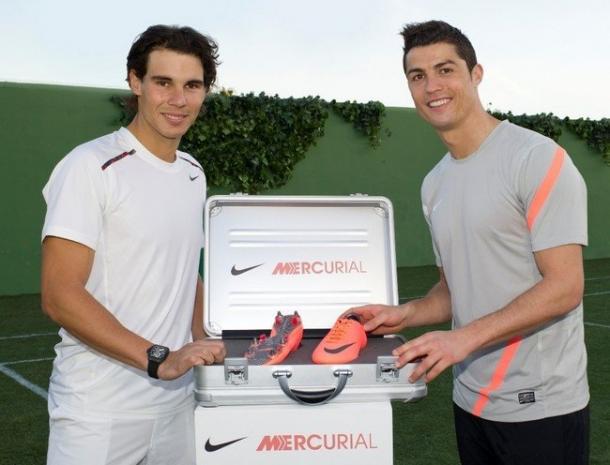
Novak Djokovic-Neymar
This one is a bit of a surprise, but hear me out on this one. Though one is already at the top of his game, and the other is near the top, these two have more similarities than you think. For the longest time, both men, despite the significant age difference, were overlooked by some by their ability to become one of the world’s best? Why? Well for Djokovic, it was the poor mentality in the big moments early on in his career, while for Neymar, it was because he hadn’t proved his dominance in one of the world’s top leagues.
That all changed recently. Neymar has now proven himself to be one of the best players in the world since his move to Barcelona while the Serb has ultimately turned it around, becoming one of the most mentally stable players around.
Another similarity between the two involves the changes they made to ensure their place at the top of the game is secure. Djokovic moved to a gluten-free diet after finding out about his allergy to gluten and has never had fitness problems since and is now one of the fittest players on tour. Also, he hired coach Boris Becker in 2014, as the German has helped the world number one win five Grand Slams and 10 Masters 1000 titles in just over two years. Neymar’s change was simple. He moved from Santos to FC Barcelona, securing a future with teammates who could help him come into his own with Messi and Andres Iniesta instead of playing second fiddle to Ronaldo in Madrid.
We’ve been comparing achievements, but with Neymar’s career much shorter than the Serb’s, it leaves a bit to be desired. Both men have won major titles in the past year; Neymar was part of Barcelona’s treble-winning side as well as a FIFA Club World Cup champion while Djokovic made it 11 Grand Slam titles with another win at the Australian Open this year.
Both players had similar paths to the top of their game. In the Big Four era, Djokovic has finally come unto his own despite the dominance of Nadal and Federer. Now with one struggling and the other up in age, he’s the dominant force in men’s tennis now. Neymar undoubtedly proved his worth last year for Barcelona, but his worth has increased even more this year, picking up the team whilst Messi was sidelined with an injury. Despite Ronaldo and Messi still competing at a high level, soccer will be in good hands once Neymar officially takes over the world.
Andy Murray-Gareth Bale
Ahh yes. The first two that have a nationality connection. Don’t get us started on the whole Murray is Scottish and Bale is Welsh, both are from Great Britain. How do these two stack up in comparison to the rest? Well, both men have been striving to be the world’s best but have fallen short despite recent successes.
Ironically enough, Murray and Bale had their breakout moments in 2012 and 2013. 2012-13 was the season the Welshman became a goalscoring machine. That season, he scored 31 goals in all competitions for Tottenham Hotspur, including some memorable ones against West Ham United and Olympique Lyonnais.
After a heartbreaking loss to Roger Federer during the 2012 Wimbledon final, the Brit exacted revenge on the Swiss with an upset victory over the 17-time Grand Slam champion at the All England Club at the London Games to capture a gold medal. He followed that up with his first Grand Slam title at the US Open that year. The summer of 2013 was big for both the Scot and the Welshman. That summer, Murray ended the British drought by winning the Wimbledon title, and that summer also witnessed Bale’s high-profile move from Tottenham to Real Madrid.
These two will always be second fiddle in their careers. Andy Murray is always second to Djokovic, Federer, or Nadal, and even if he reaches world number one, his accolades will fall short of those three aforementioned players. With Bale, he’s on a team with Cristiano Ronaldo, playing second fiddle to him already, and once Ronaldo leaves, many have tapped Neymar to become the best in the world, leaving the Welshman to be the bridesmaid rather than the bride.
Juan Martin del Potro-Sergio Aguero
The second connection of nationalities, with these two being Argentine and ironically enough, both are 27-years-old. Despite their very successful careers to date, injuries have prevented the two from becoming the best.
Del Potro’s injuries are well-known, dealing with wrist issues, 2010 was del Potro’s first injury-ravaged season, losing nine months of his season. That was followed by losing most of his 2014 and 2015 seasons with the recurring wrist injuries.
Aguero’s list of injuries run much longer than del Potro’s. Since his move to Manchester City, the Argentine has sustained injuries 16 different times in his four and a half seasons with the club. Obviously despite his injury list being much longer, no single injury has kept him out for a time longer than a couple of months.
Both men have had some success in terms of silverware. Aguero is a two-time Premier League champion with his most notable contribution being the dramatic stoppage-time winner against Queen’s Park Rangers in 2012 to give the Citizens the title. He was also a gold-medalist in the 2008 Beijing Games. 2009 saw del Potro’s stunning win over Roger Federer at the US Open and picked up a bronze medal at the 2012 London Games.
If injuries haven’t ravaged these two, there’s no doubt they could undoubtedly be recognized as one of the world’s best year in, year out. However, all we’re left is is a world of “What ifs”.
Nick Kyrgios-Luis Suarez
Two of the world’s most-talented players have had some controversies in their respective sport. Despite that, they’re still highly-recognized for their abilities in their respective sport.
Luis Suarez has been a part of many incidents in his career. His first came during the 2010 World Cup against Ghana, when he infamously handled the ball on the goalline to prevent the Black Stars from advancing. He was subsequently red carded, but Uruguay went on to win in penalties. Next up was his first biting incident in the Eredivisie, biting Otman Bakkal.
He would move to the Premier League side Liverpool and found himself in two more boiling debates about him. First, he was suspended for racially abusing Manchester United player Patrice Evra, and a couple of years later, he bit Chelsea’s Branislav Ivanovic handing him yet another suspension. His final incident was another bite, this time against Giorgio Chiellini during the 2014 FIFA World Cup. That final action gave him a four-month ban from all soccer related activities, and a nine-month international match ban. These incidents have marked Suarez as one of the “bad boys” of soccer.
The term “bad boy” doesn’t fall too far from the tree if you’re Nick Kyrgios. In a sport known as the gentleman’s game, the 20-year-old Aussie has caused quite the ruckus on court. 2014 was the beginning of it, being given three code violations for his use of profane language in his upset win over Rafael Nadal at Wimbledon. A year later, at the All England Club, he slammed his racket so hard against Milos Raonic that it bounced into the crowd, supposedly called the chair umpire a “dirty scum” in his opening round win against Diego Schwartzman, and was seen tanking in his loss to Richard Gasquet.
Later that summer, the major incident came when he sledged Stan Wawrinka at the Rogers Cup. Here’s a reminder of what the Aussie said to the the Swiss, “Kokkinakis banged your girlfriend. Sorry to tell you that mate.” He was later fined in Tokyo for complaining about the surface. But the antics don’t stop there, this Australian summer. He was seen answering his cell phone at the Australian Open and lashed out at chair umpire James Keothavong. Most recently at Indian Wells, French chair umpire Damien Dumusois docked the Australian a point for an expletive. The 20-year-old was none too pleased with the call and sat down in the crowd after the call.
Despite these incidents, both men have the talent to stake their claim as one of the world’s best players. During his stint with Liverpool, he scored 31 goals in his final season, winning Premier League Player of the Year. He’s now an integral part of Barcelona’s MSN (Messi-Neymar-Suarez), helping the team win a treble last season. Kyrgios’ rise to the elite players in the world has been helped with some big results over the past few years. 2014 marked his first ever Grand Slam quarterfinal at Wimbledon, where he upset Nadal in the fourth round and then made the 2015 Australian Open quarterfinals. This year, he won his first title in Marseille, defeating three straight top 15 players en route to the title.
Grigor Dimitrov-Nani
Up until now, we’ve been talking about how players have compared because of their ability or controversies. Now we discuss a couple of players who have failed to live up to their monikers. Both Grigor Dimitrov and Nani were touted as the next big things in their respective sports with Nani being named as the “next Cristiano Ronaldo” and Dimitrov getting the nickname “Baby Fed”. Despite these high praises, the two have failed to live up to the hype.
Nani made his breakthrough after Cristiano Ronaldo’s move to Real Madrid. He finished the 2009-10 with three goals and followed it up with back-to-back 10 goal seasons. After that however, his form dropped off and fell out of favor with managers Sir Alex Ferguson and David Moyes. He was then shipped off to the Turkish League to Fenerbahce.
2013 marked Dimitrov’s first ATP World Tour title in Stockholm, defeating David Ferrer. The following year, Baby Fed reached his first major quarter and semifinals at the Australian Open and Wimbledon respectively. He also made it into the world’s top ten. 2015 marked a significant drop off from the Bulgarian. He won 17 less matches last year compared to 2014 and his results in big tournaments have fallen off significantly.
The mirrors of Nani and Ronaldo and Dimitrov and Federer are very eery. Both Nani and Ronaldo are Portuguese wingers who had tons of pace and were very skillful on the ball. Dimitrov’s game resembles Federer’s to a tee from service motion, forehand, backhand, to even how they move. Both replicate the greats, both have failed, though, Dimitrov still has time to succeed on his own.
Li Na-Homare Sawa
We now move to our first women’s comparison. Both women have a special connection holding the weight of their country on their shoulders. Li Na, a Chinese tennis player, was one of the first Asian females to have success on the WTA while Sawa captained a Japan side that was just ravaged by a tsunami back in 2011.
2011 is the common year as these two women helped transcend their respective sports into new heights. June 2011 was the first of a memorable summer for the continent of Asia as Li Na became the first Chinese player ever to win a Grand Slam title. Her match was watched by over 330 million people worldwide as she helped inspire a nation to grow into more of a tennis nation.
A month later, it was Homare Sawa’s turn to inspire a nation. Four months after an earthquake and tsunami ravaged Japan, she led her country out of the group stages and then followed it up by stunning powerhouses Germany and Sweden in quarter and semifinals of the 2011 FIFA Women’s World Cup.
In the final, they met another powerhouse in the United States, a side looking to lift their first World Cup title since 1999. Alex Morgan struck just under 20 minutes before full-time, but Aya Miyama scored just inside ten minutes to go. The United States looked to have won it when Abby Wambach scored in the final minute of first half extra time. However, it was Sawa who leveled three minutes before the death to force the penalty shootout. In their first ever final, it was the side with no major tournament finals experience who did not crack under pressure. Sawa not only lifted the World Cup trophy as the Japan captain, but also took home the Golden Boot and Golden Ball, providing a nation struck by tragedy, something to rejoice about.
Eugenie Bouchard-Alex Morgan
The two darlings of women’s tennis and soccer respectively. Famously talked about by many outsiders about their looks, but these women have quite the game too. The looks, the game, and overcoming adversity is why we’ve come to compare these two women.
For Bouchard it’s simple, 2014 marked her breakout season to many. She won her first career WTA title in Nuremberg, she made the second week in all four Grand Slams, including semifinals or better in three of them. She also made her first Grand Slam final at Wimbledon, losing to Petra Kvitova.
The pressure of being a top player fell hard on the Canadian. After one of the best years anyone could have in 2014, she slipped, literally, down the rankings. She recorded 12 wins in total and fell outside the seedings for the Grand Slams to start 2016. Oh, let’s not forget about her US Open incident where she slipped in an off-court setting and was then diagnosed with a concussion, which has now followed with a lawsuit from the Canadian.
How do you put a dismal season like that behind? Double your previous season’s total quarterfinal appearances in your first two tournaments of the season, make your first final since 2014, and now lead the tour in wins after making a second final in the year. Everyone wrote the 22-year-old off this year after a tumultuous 2014, well, she’s better than that. She’s proved her resilience and that she’s ready to compete as well as she did in 2014.
Alex Morgan’s come up and her overcoming adversity have come in a much longer timeframe but still has had to deal with the same issues as Bouchard. The American made her breakthrough with the United States Women’s National Team during the 2011 FIFA Women’s World Cup, scoring her first goal in the competition against France.
2012 was her season of brilliance, being a major part of the USWNT, registering 28 goals and 21 assists that year, helping them win a gold medal. 2015 was difficult for Alex Morgan as she took a major knee injury into the 2015 FIFA Women’s World Cup. Her contributions were not as clear-cut as they were back in 2012, but she overcame the knee injury to still remain a major contributor, helping the US to win their first World Cup since 1999. Like Bouchard, 2016 has breathed new life into Morgan. In eight appearances, she’s tallied eight goals and three assists, proving that she’s back to peak form, just how the Canadian is.
Abby Wambach-Serena Williams
We’ve come to our last and final comparison of this piece, between two ultimate champions and competitors. It was about a four year timeframe which separates the breakthroughs of Wambach and Serena. Serena made hers at the 1999 US Open while Wambach made hers in the 2003 FIFA Women’s World Cup. After those moments, well, the rest is history.
These two women transcended their respective sports in a good way. Wambach was the woman to dominate women’s soccer after Mia Hamm, becoming the top scorer in international soccer with 184 goals. Serena currently has a tally of 21 Grand Slam titles, third most all-time behind Steffi Graf and Margaret Court.
Their successes are far greater than what they have won though. How they’ve matured before our eyes for different reasons is why many adore them. For Serena, it truly began last year during her first return during Indian Wells since the racial incident. She stepped up and decided to comeback, and it was quite emotional for her. That choice by Serena to play in Indian Wells after all those years of not playing showed us a new, softer side of her, something we haven’t seen. It was all a part of the maturing process, which is why she’s becoming more adored by many now.
Wambach’s maturity showed when the United States needed her in a position of leadership but not on the pitch. With her age up in the years, she was no longer fit to compete from start to finish all 90 minutes like she had been. What did she do? She took a back seat as she came off the bench throughout the tournament, trying to capture the one missing title in her trophy cabinet, the FIFA Women’s World Cup. She played the final 10 minutes of the Women’s World Cup Final. Her contribution was minimal, but her impact on the team was great.
Before we talk about their accolades, there’s one more factor which make these women great, their knack for the big moments. Wambach’s most famous clutch moment was in 2011 Women’s World Cup quarterfinal against Brazil. With the US down 1-2 and time running out, the American headed home Megan Rapinoe’s cross to send the game into penalties, marking one of the most memorable calls in Women’s World Cup history by Ian Darke, as the US survived. Her next big moment was in the 2012 Olympic semifinal against Canada. Down 2-3, she needed to step up and convert the penalty with ten minutes to play to level the match. She did just that coolly and calmly, sending the match into extra time. The now 35-year-old Wambach has scored in every World Cup and Olympics she has played in.
Serena is likely the greatest frontrunner we’ve seen in the history of tennis. The further she gets in Grand Slams, the better she gets. In the second week of Slams, her record only gets better the further she progresses, with her current finals record at 21-5. Whenever she needs an ace trying to save break point, we get it. In total she’s won 69 titles in 87 finals, proving she lives for the big moments.
Now to their accolades, like we said earlier Serena has 21 Grand Slam titles and Wambach leads international soccer with 184 goals. Serena also has some other accolades that might not be touched either. She’s the only player, male or female, to win three of the four majors at least six times. She’s also the oldest-ever world number one. The list goes on and on. Wambach was one of five women ever to win FIFA Player of the Year, joining countrywoman Mia Hamm, Homare Sawa, Marta, and Bridget Prinz. She’s also a seven-time recipient of the US Soccer Athlete of the Year award.
Final Thoughts
As we see, despite the major differences in how each sport is played, each set of athletes pairs up well. Could some have paired up better than others? Potentially. However, not one comparison is perfect in the world of cross-sport comparisons.














